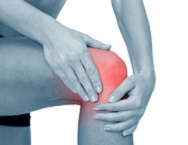Recent media stories, a landmark study and the Autumn/Winter TV schedules highlight the Össur Unloader’s ability to offer pain relief, improve function and maintain a healthy lifestyle
Recent national news stories (London, UK – August, 2017) have drawn attention to the Unloader One knee brace from Össur – as a key aid in helping leading celebrities to continue with an active lifestyle, whether suffering from osteoarthritis or recovering from injury.
National treasure Ant McPartlin’s historic knee surgery and subsequent addiction to painkillers has been well documented, and the star has been photographed in several newspapers wearing the Unloader One as part of his recovery.
Sharron Davies, the television presenter and former competitive UK swimmer, has been wearing an Unloader One since 2012 and recently returned from filming Celebrity Island with Bear Grylls.
“Some of the tasks that I had to do recently on Celebrity Island with Bear Grylls involved long challenging walks. I wore my unloading brace to help prevent the painful swelling around my knee that can come from doing activities like walking,” said Sharron.
And last week, celebrity chef and Unloader One wearer Simon Rimmer was announced as a participant in the forthcoming series of Strictly Come Dancing, who used an Unloader as part of his recovery following microfracture surgery which led to chondral damage.
Numbers of knee surgeries are growing year on year – around 150,000 knee operations are conducted in the UK each year. The annual cost to the NHS for total knee replacement surgery is currently more than £400 million.

“The Unloader One has been proven to reduce the need for pain medication in patients with chronic knee pain and is available on the NHS,” said Emlyn Lewis, Managing Director Össur UK. “Using the product can empower people like Ant, Sharron and Simon to manage their pain biomechanically rather than through the use of pharmaceuticals, which can have negative side effects.”
The Unloader One is a lightweight, easy to use, non-surgical treatment option for the symptoms associated with osteoarthritis of the knee. Recent research demonstrates that Unloader One reduces pain, improves function and decreases the use of pain medication.
About Össur
Össur is a global leader in non-invasive orthopaedics that help people live a life without limitations. Its business is focused on improving people’s mobility through the delivery of innovative technologies within the fields of braces, supports and prosthetic limbs. A recognised “Technology Pioneer”, Össur invests significantly in research and product development; its award-winning designs ensuring a consistently strong position in the market. Successful patient and clinical outcomes are further empowered via Össur’s educational programs and business solutions. www.ossur.com
Content supplied by Ossur UK






